Senolytic CAR T cells reverse senescence-associated pathologies
- PMID: 32555459
- PMCID: PMC7583560
- DOI: 10.1038/s41586-020-2403-9
Senolytic CAR T cells reverse senescence-associated pathologies
Erratum in
-
Author Correction: Senolytic CAR T cells reverse senescence-associated pathologies.Nature. 2024 Mar;627(8004):E9. doi: 10.1038/s41586-024-07197-3. Nature. 2024. PMID: 38383793 No abstract available.
Abstract
Cellular senescence is characterized by stable cell-cycle arrest and a secretory program that modulates the tissue microenvironment1,2. Physiologically, senescence serves as a tumour-suppressive mechanism that prevents the expansion of premalignant cells3,4 and has a beneficial role in wound-healing responses5,6. Pathologically, the aberrant accumulation of senescent cells generates an inflammatory milieu that leads to chronic tissue damage and contributes to diseases such as liver and lung fibrosis, atherosclerosis, diabetes and osteoarthritis1,7. Accordingly, eliminating senescent cells from damaged tissues in mice ameliorates the symptoms of these pathologies and even promotes longevity1,2,8-10. Here we test the therapeutic concept that chimeric antigen receptor (CAR) T cells that target senescent cells can be effective senolytic agents. We identify the urokinase-type plasminogen activator receptor (uPAR)11 as a cell-surface protein that is broadly induced during senescence and show that uPAR-specific CAR T cells efficiently ablate senescent cells in vitro and in vivo. CAR T cells that target uPAR extend the survival of mice with lung adenocarcinoma that are treated with a senescence-inducing combination of drugs, and restore tissue homeostasis in mice in which liver fibrosis is induced chemically or by diet. These results establish the therapeutic potential of senolytic CAR T cells for senescence-associated diseases.
Conflict of interest statement
COMPETING INTERESTS
A patent application has been submitted based in part on results presented in this manuscript. C.A, J.F, J.L, M.S, S.W.L are listed as the inventors. J.F and M.S hold other unrelated patents on CAR technologies.
Figures
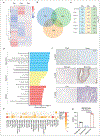
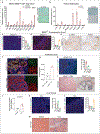

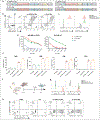

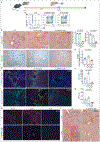

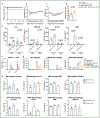
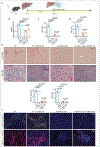




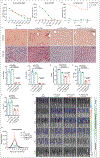
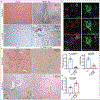
Comment in
-
Driving CARs to clear senescent cells.Nat Rev Drug Discov. 2020 Aug;19(8):509. doi: 10.1038/d41573-020-00117-w. Nat Rev Drug Discov. 2020. PMID: 32581354 No abstract available.
-
T cells engineered to target senescence.Nature. 2020 Jul;583(7814):37-38. doi: 10.1038/d41586-020-01759-x. Nature. 2020. PMID: 32601490 No abstract available.
-
Use of CAR T cells as senolytic agents.Nat Rev Nephrol. 2020 Sep;16(9):485. doi: 10.1038/s41581-020-0324-3. Nat Rev Nephrol. 2020. PMID: 32641759 No abstract available.
-
A Fresh Approach to Targeting Aging Cells: CAR-T Cells Enhance Senolytic Specificity.Cell Stem Cell. 2020 Aug 6;27(2):192-194. doi: 10.1016/j.stem.2020.07.010. Cell Stem Cell. 2020. PMID: 32763179 Free PMC article.
-
Step further towards targeted senolytic therapy: therapeutic potential of uPAR-CAR T cells for senescence-related diseases.Signal Transduct Target Ther. 2020 Aug 13;5(1):155. doi: 10.1038/s41392-020-00268-7. Signal Transduct Target Ther. 2020. PMID: 32792494 Free PMC article. No abstract available.
-
Senolytic chimeric antigen receptor (CAR) T cell: driving the immune system to fight cell senescence.Immunol Cell Biol. 2020 Oct;98(9):709-711. doi: 10.1111/imcb.12391. Epub 2020 Aug 25. Immunol Cell Biol. 2020. PMID: 32842163
-
Chimeric Antigen Receptor T Cells as Senolytic and Antifibrotic Therapy.Hepatology. 2021 Mar;73(3):1227-1229. doi: 10.1002/hep.31596. Epub 2021 Feb 21. Hepatology. 2021. PMID: 33058216 No abstract available.
References
-
- Serrano M, Lin AW, McCurrach ME, Beach D & Lowe SW Oncogenic ras provokes premature cell senescence associated with accumulation of p53 and p16INK4a. Cell 88, 593–602 (1997). - PubMed
Publication types
MeSH terms
Substances
Grants and funding
LinkOut - more resources
Full Text Sources
Other Literature Sources
Medical
Molecular Biology Databases

